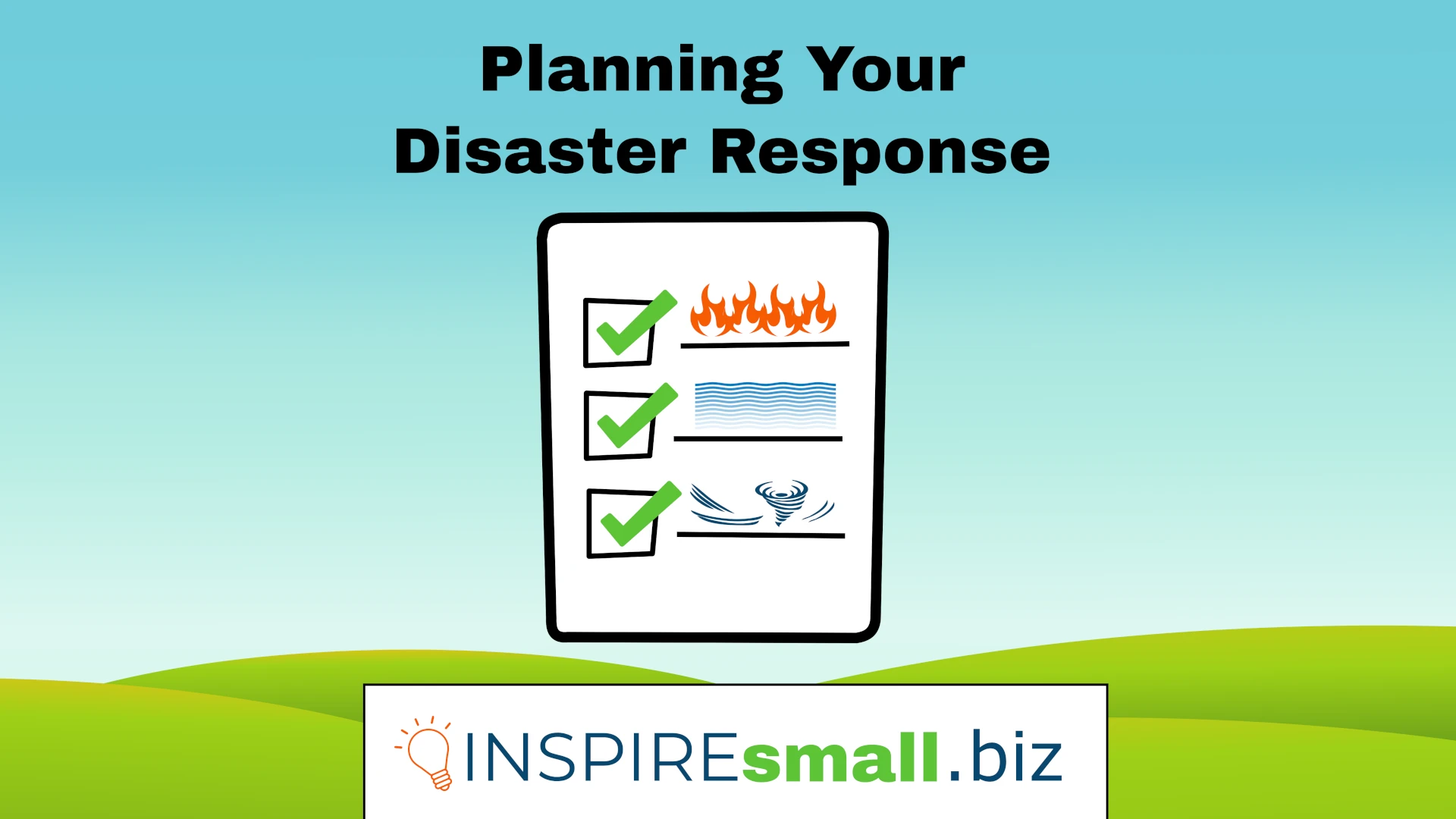Experiencing a disaster is the last thing we want to think about happening to our business. While preventing a disaster is often out of our control, there are steps to take to make sure your business is ready to respond when a disaster strikes. In this blog, we’re going to talk about the steps you should take to prepare your disaster response.
Risk Assessment
The first step of your disaster response is to consider the types of disaster your business could face. Each disaster varies in the specific impact to your business, so you’ll want to have a plan for each scenario.
Natural Disasters
Start with natural disasters such as tornadoes, flooding, and wildfires. Depending on where you’re located, there may be additional natural disaster risks such as earthquakes, hurricanes, and volcanic eruptions.
Human & Health
Examples of Human and Health-related threats include accidents, illnesses and acts of violence.
Technology
This category includes power outages, equipment failures, and cyber-attacks.
Developing Your Disaster Plan
Planning for each of the risks your business faces will give you the ability to plan your appropriate response. Each scenario should include a response to each of these points:
Employee & Customer Safety
Your first priority of any disaster plan is keeping your employees and customers safe. This includes having a designated place of shelter, clearly marked exits and a working fire alert system.
Securing Your Business
Next, you’ll need to secure your business. This includes using a backup power source for your alarm system or covering broken windows. Consider how each potential disaster affects your ability to secure your business.
Impact on Operations
Depending on the disaster, your ability to operate will be affected for a different amount of time. For example, a power outage may ability to operate for several hours versus a cyber-attack that could have a much longer disruption to your operations.
Communicate With Your Community
Keep your community informed on the current situation at your business. Honesty is always the best policy with everything in your business, especially during a disaster. Your public response should include these things:
- What disaster occurred
- Impact to your business operations
- When operations will resume
- Support for your community
Email Your Customers
Your first step of communication is to send your customers an email. Inform them of the disaster and its impact on your business. If you’re using a fundraiser to help recover from a disaster, include that link. You’ll find that many of your customers are happy to help.
Post on Social Media
Create a post for your social media channels. Just as you did for your email list, include the type of disaster your business has experienced, any impact on your operations and how your audience could support your recovery efforts.
Your Website
If you have a blog on your website, create a new post informing website visitors of the disaster, the impact it has on your operations and how visitors can support your recovery efforts.
If the disaster your business has experienced will disrupt operations for more than one day, consider making changes you your front page to inform visitors.
Publish A Press Release
Create a press release that you send to local TV, radio, and newspaper outlets. Include the details of the disaster, what impact the disaster has on your operations, how the community can support your business and who the media should contact for questions and interview requests.
Implementing Your Disaster Plan
Disasters strike at a moment’s notice, and you’ll need to implement your plan quickly. Make sure that every member of your team knows your plans and when it’s time to act.
Weather Radio & Emergency Broadcasts
Every home and business should have a battery-operated weather radio. When severe weather is expected, give the radio to the person working who makes the decision to implement your disaster plan. Weather Warnings should be taken seriously, even if you’re not able to see the threat from your business.
Hacks & Data Breaches
Data breaches are an increasingly common occurrence over the past decade. All 50 US states have laws that require businesses notify individuals when their identifiable data (example: name with Social Security Number, state ID or driver’s license number) has been compromised. The laws for your specific state can be found here.
Conclusion
Nobody wants a disaster to happen but having a plan will help your business if disaster ever strikes. Check out the FEMA disaster preparedness guide for businesses to start your disaster plan here.
References & Further Reading
- Small Business Administration. (n.d.). Prepare for emergencies. Retrieved March 2, 2022, from https://www.sba.gov/business-guide/manage-your-business/prepare-emergencies
- Federal Emergency Management Agency (FEMA). (n.d.). Business Emergency Preparedness. Business | Ready.gov. Retrieved March 2, 2022, from https://www.ready.gov/business
- Small Business Administration. (n.d.). Stay safe from cybersecurity threats. Retrieved March 2, 2022, from https://www.sba.gov/business-guide/manage-your-business/stay-safe-cybersecurity-threats



